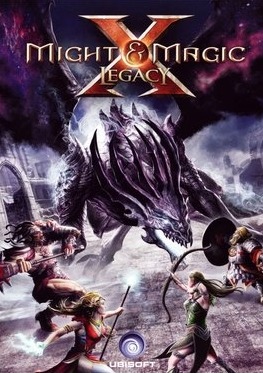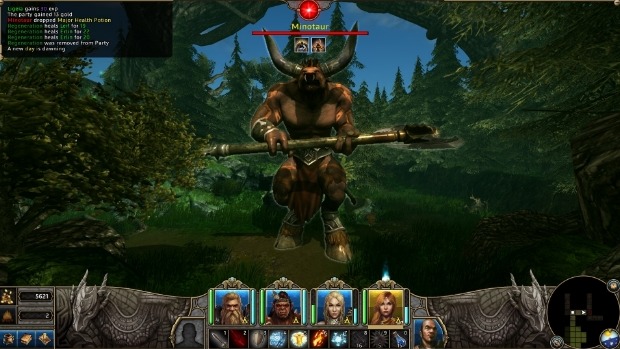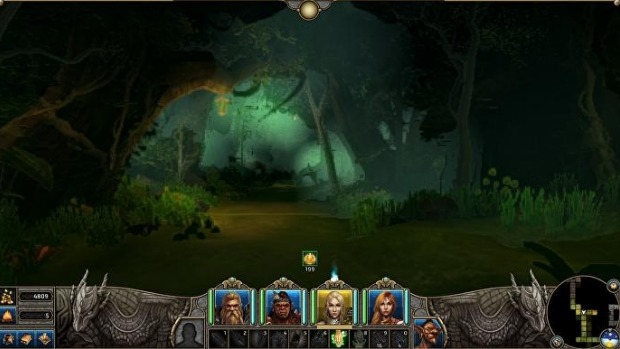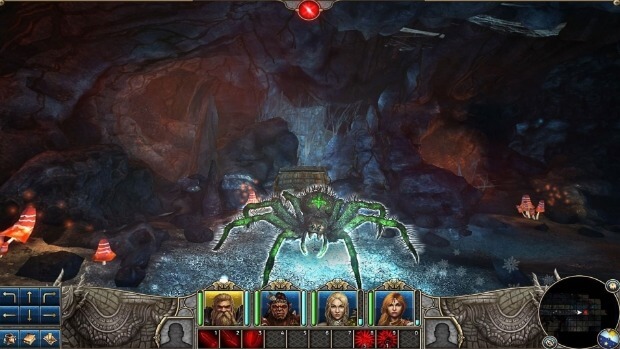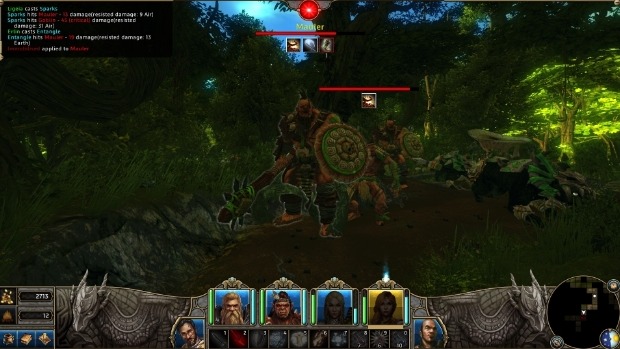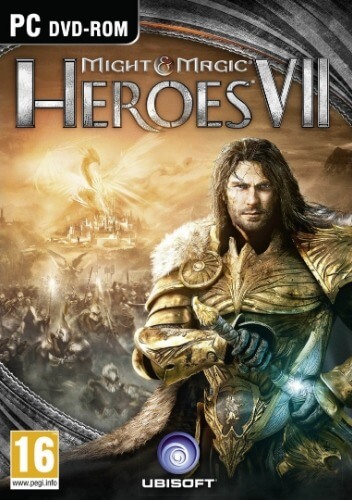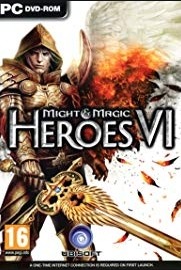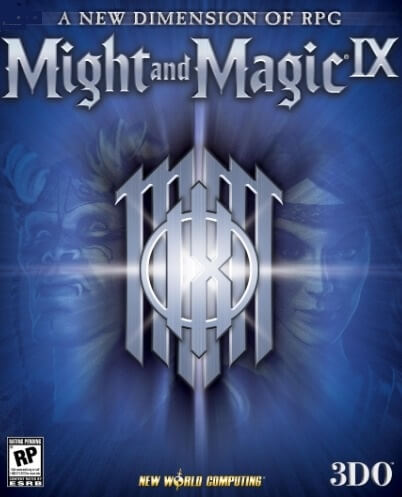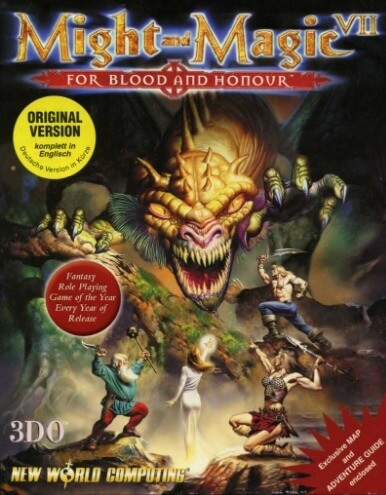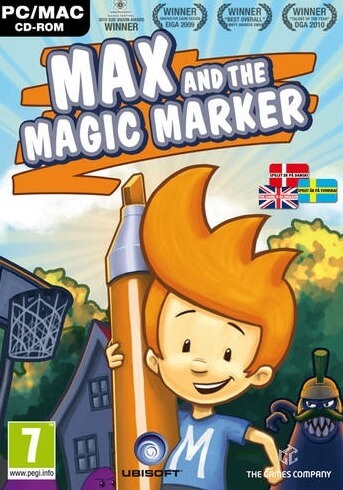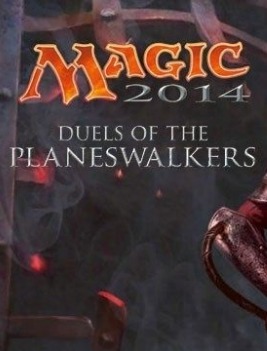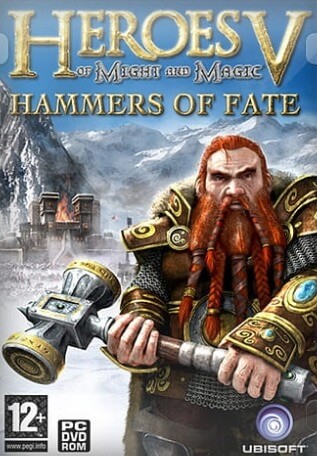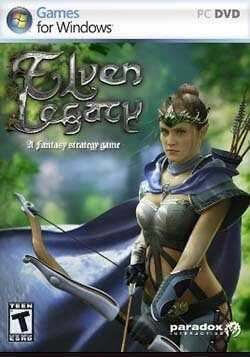Movement & Combat
The movement system in Legacy reverts to that used during the World of Xeen portions of Might and Magic V, in which players move around a grid system to get around the game world, no matter the location they are in, with time flowing when moving from grid to grid; the flow of time differs depending on whether they are travelling in a town/dungeon or in the wilderness. However, the game world featured in Might & Magic X is much bigger than that of the world featured in Might and Magic IV, providing more locations to explore as a result. Combat in the game reverts to a turn based system upon seeing an enemy, rather than real-time, with the party capable of hitting a hostile only if they are in line-of-sight before them (i.e. in the grid space in front of them). Enemies can't be hit diagonally but can be hit at range before they move in close to the party's position, which can influence how they move around to do so, while the size of an enemy unit determines how many can fit into a single grid space. While movement is permitted during combat, if an enemy blocks the party's way they must fight until their route is clear. Certain objects found in the game world can assist in battles by conferring a temporary benefit for a short period.
Skill & Follower System
The game utilizes the same skill system as previous titles, since it debuted in Might and Magic VI and was then later improved upon in Might and Magic VII. Skills are divided in the game by type - Weapon, Armour, Magic and Miscellaneous - while a character's class determines the level-cap of expertise a skill can go to, and thus how high a rank it can be, in a similar manner to that of For Blood and Honor; while minor skills can go no further than Expert, secondary skills can improve up to Master, and primary skills can go as high as Grandmaster, thus a character in one class may be able to use bows at the Master level but a character in another class may not advance any further than an Expert level. As with previous titles, higher levels of expertise require a character to reach a certain rank and then find a teacher to train them higher, however they cannot progress further in rank beyond the rank-cap of their level of expertise until they have received training; if a character reaches Expert level for a skill that can later be a Master of, they must first be trained as an Expert before they can allocate more points to that skill.
While the follower system of previous games returns, it reverts to the original set-up prior to Might and Magic IX, in that followers confer benefits to the party, but do not fight for them. Only two followers can be with the party at any time, with each follower bestowing a benefit to the party for the duration with them (i.e. improving their combat skills), while taking a small fee when hired along with a percentage of the gold whilst with the party. Some followers are associated to specific quests, and are thus unable to leave until their associated quest is completed.
Changes & New Features
One of the biggest changes in Might & Magic X comes from the setting of the game. Due to it being set in Ashan, the science fiction elements that have been the basis behind some of the storylines in previous games of the series are no longer included, yet references to previous titles are present in the game world for long-time fans (such as the name of the first town visited). Another change includes the use of a shared inventory space for the party, rather than characters each having an individual one like in previous titles. Legacy also saw a change in the way spells are learned; characters must now visit a library to learn a new spell, and can only acquire a new one depending on their level of magic skill expertise in any of the following schools of magic their class has access to: Fire, Water, Earth, Air, Light, Dark, Prime.
Alongside these changes and the major ones to major elements, the game brings in a few new features. A toolbar is now provided within the game that be used to hotkey items, spells or abilities for each character, depending on how the player wants them set up, while a much easier quest system is now used that provides updates when a quest is progressing well. A bestiary is now provided that details all of the creatures and enemies encountered during a play-through, with the addition of a lore section that provides back-stories on events, places, history, and so forth. Alongside a range of magic equipment that the party can use, players can uncover Relics, special pieces of equipment which, when equipped to a character (some depending on their skills), earn experience as if a member of the party and can thus earn improvements on earning enough to level up.
The game also during opendev phase included a modding kit, which should allow fans to create or modify content in the game. This functionality was however removed with release due to requirement of function present only in Pro version of Unity 3D.
Story
Setting
Much of the game takes places on the Agyn Peninsula which is a part of the continent of Thallan, within the world of Ashan. The events of the game take place a few years after the war that occurred during Might & Magic Heroes VI, in which the city of Karthal, a colony of the Holy Falcon Empire, is now planning to secede from it. Alongside the city, the Peninsula also feature three major towns, vast plains, thick bogs, barren wastelands, coastal bays, tall mountains, thick forests, and a vast dungeon city beneath the land. At the beginning of the game, Karthal goes into turmoil and suffers a political coup as a result.
Plot
At the small town of Sorpigal-by-the-Sea, on the east coast of the Agyn Peninsula, a party of raiders arrive by ship on an important task - to bring their mentor's remains to the city of Karthal for burial. Upon stepping off their ship, they are met by a mysterious man named Dunstan, who reveals that Karthal recently closed itself off to outsiders in the aftermath of a major coup. Unable to gain entry until the city opens up, the raiders pass the time by aiding the town's garrison in dealing with a number of problems. Impressed with their work, the garrsion's captain sends the raiders to Castle Portmeyron to meet with the Peninsula's new governor, Jon Morgan, only to find upon arrival that the castle is being besieged by bands of brigands and militia. Fighting their way through the castle against them, the group eventually rescue the governor, who soon asks them for their help to investigate a number of strange events that occurred recently in the region.
The raiders begin initially with investigation into a dark elf presence at the Elemental Forge - an ancient structure in the centre of the peninsula, housing elemental beings, in which they find themselves fighting off one such being that had been corrupted by an unknown force, freeing it in the process. After reporting back on what they found, Morgan soon sends them to the woods near the town of Seahaven, in order to meet with Lord Kilburn and ask for his help in identifying the handwriting of a message that was found after the attack on Portmeyron; Morgan also asks them to carry a letter to the pirate king, Crag Hack, so he can establish a truce with him. Learning from Kilburn that Montbard, the former governor of the region, had ordered the attack on Morgan's castle and is now hiding in the Lost City - an ancient and ruined underground city - the party quickly track him down and defeat him. While Morgan remains suspicious on how Montbard funded the attack on the castle, he soon sends the raiders to Karthal to find a man called Falagar, an ambassador who was working in secret with Morgan as a spy within the city. The party manage to gain entry via the city's sewers, just as it finally opens its gates to outsiders, while encountering Dunstan before he departs.
